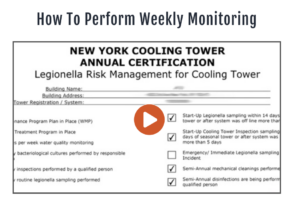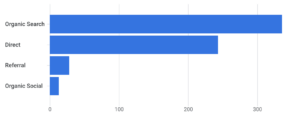Investments in content marketing can pay off significantly for businesses. With the right strategy, it has the power to increase traffic and attract high-quality leads. Although content marketing is a tried-and-true approach, it does come with its share of challenges. There is not much room for missed opportunities and mistakes, so marketers need to get everything right the first time to achieve the best results.
Content Marketing Mistakes To Avoid

Content marketing strategies should be crafted by marketing professionals who have taken all of the business’s characteristics and goals into consideration. In this sense, each case will be different; a successful formula for one company might fall short for another type of business. However, there are five universal content marketing mistakes that professionals must avoid making if they want their content marketing efforts to be successful.
1. Not Creating Content That Is Reusable
Whether they write their blog posts in house or outsource them, many businesses read through their posts once, post them to their website, and never think about them again. Although posting fresh content on a regular basis will still get results over time, taking this approach means missing out on some big opportunities to expand their reach.
It takes a lot of time and resources to create a high-quality piece of content, but marketers can get a greater return on their investment if they create content with the idea of repurposing it in mind and post it on different channels over time.
Instead of creating new content day after day, marketers can take content that has already been created and find ways to present it to more people. Putting a new spin on old content is a great way to help it reach new audiences.
Repurposing content ties in nicely with marketing’s rule of seven, which states that buyers need to hear a message seven times, on average, before closing a deal. Therefore, it makes sense to deliver the same message to the audience in different ways several times instead of letting a topic disappear into the archives after covering it only once.
Choosing Content For Repurposing
For businesses that already have a pool of content to draw upon, analytics can provide insight on the best posts to repurpose. Look at what is performing well and think about how it can be used to create a fresh experience
In addition to topics that have been successful in the past, timely topics are good choices when it comes to repurposing content.
Ideas For Repurposing Content
Here are some of the ways a successful piece of content can be repurposed.
Turn Web Page Content Into Video Content

There are a few ways of reusing content in videos. The first is turning a blog post into a video. This may be as simple as reading or discussing the post while the video shows supplemental graphics and other visual aids. If the post does not flow well when being read aloud, it can be helpful to write down the post’s subheadings and the key points of each one and then discuss it in the video in a more conversational fashion.
This approach works both ways; businesses can also take any existing marketing videos that they have published and have them turned into blog posts. There are many websites and online tools that can create transcripts for videos, which can then be sent to writers to form the basis of blog posts. A good writer will be able to condense a video into a post summarizing key points. They may also hone in on a few specific topics that were briefly touched upon in the video and use them as a springboard for creating even more posts that serve as spin-offs to the video.
Videos can also be added to blog posts. For example, marketers can create a video version of a post simply by adding “Video” to the title, keeping the introduction, and replacing the body with the video. These shorter posts are attractive to people who prefer to skim and digest information quickly, providing another avenue of reaching those who are not inclined to sit down and read a longer blog post.
Figure 1.3 demonstrates a video that was created from content.
Create An eBook
Another method for repurposing content is creating an eBook. This is a relatively easy way for businesses to increase the amount of content they offer. Those with an existing archive of content can usually find ways to compile some of it into an eBook. The best approach is to look for posts that logically fit together or that would work well as a series, add in some graphics or interviews, and put it all together to create an eBook.
There are many topics that an eBook can cover, and offering them boosts a business’s credibility and positions them as an authority in their field. Using repurposed blog posts for an eBook reduces the amount of work needed to create new content since most of it is already written. In fact, putting together an eBook involves more organizing than writing and allows businesses to get more value out of their posts.
An eBook also works well with a LinkedIn content strategy. Announcing an eBook to industry connections on the platform can allow a business to attract a related audience.
Give Older Posts A Refresh
Updating blog posts plays an important role in any good content strategy. Previous posts that contain useful information have a way of getting buried over time, so it is prudent to look through the blog archives to identify posts that could still be valuable to today’s readers with a few tweaks. This is an excellent time-saver because it means there is no need to draft a completely new post and come up with fresh ideas. Instead, it is simply a matter of making existing information more current and injecting it with some new life.
In terms of distribution, the title can indicate that the post has been updated with more recent information as this will draw in readers who are looking for the newest data. Keep in mind that not everyone who reads a blog now was reading it months or years ago – and even if they were reading it in the past, they may not have read every article that was published. Therefore, resurfacing older, evergreen posts can help extend the life of high-performing blog content.
Consider the example of a post that is several years old listing the top pizza restaurants in Fairfax. This type of post can quicky become outdated, yet people will continue to seek this information. Restaurants open and close frequently, so take the time to go through the list and remove those that are no longer in business from time to time. It is also a good idea to call the pizza restaurants that are still open to make sure any content in the post about their menu is still accurate. The post might also be updated to include information related to COVID-19 measures that readers will find useful. Updating a post in this manner can increase its value instantly and improve its standing with both search engines and readers.
To find posts that can be updated, check analytics for posts that have a lot of inbound links, traffic and social shares for guidance. Updating the post might entail:
- Updating outdated copy
- Updating screenshots in guides if information or processes have changed
- Checking and replacing internal links, especially if there are better resources available now than when the links were originally included
- Removing content that is no longer relevant
- Replacing outdated data and statistics with more timely ones
Use Blog Posts For Social Media Content
Blog posts can also be reused for social media. For example, if a post contains an interesting infographic or quote, consider posting it on Instagram or LinkedIn. Passages that are particularly interesting can also be used to form the basis of social media posts.
Turn The Post Into A Podcast
Take a blog post with content that can be expanded upon and turn it into an episode of a podcast. Podcasts are a great way to reach busy people who might not have otherwise sat down and read a lengthy post. They are highly accessible, and many people listen to them on their commute, while exercising or while carrying out household tasks, so this is an excellent way to expand the reach of content.
A podcast episode or series of episodes provides an opportunity to expand on the information in a post and provide examples of what is being discussed in a more conversational manner. To expand on the content, it may be helpful to find some updated facts related to the topic that can be shared and discussed in the podcast or interview figures within the business with expertise on the topic.
Create An Infographic Highlighting Key Points
 Infographics are a highly engaging way to share important information with an audience. Keep in mind that infographics are not just for statistics; they also work for outlining processes or sharing quick tips. It is also worth noting that infographics tend to earn significantly more links than standard written posts. Many blog posts will lend themselves well to this format with a bit of creativity.
Infographics are a highly engaging way to share important information with an audience. Keep in mind that infographics are not just for statistics; they also work for outlining processes or sharing quick tips. It is also worth noting that infographics tend to earn significantly more links than standard written posts. Many blog posts will lend themselves well to this format with a bit of creativity.
Repurpose The Post Into A Guest Post For Another Site
Copying and pasting blog posts to different platforms is never a good idea, but the original content can be rewritten into guest posts and submitted to other sites. Rewriting a post to use as a guest post is faster and more affordable than creating new content as there is no need for additional research.
Turn A Listicle-Style Post Into Multiple Posts – Or Vice Versa
Listicles are popular because they are designed for quick and easy consumption. However, their format does not allow for a deeper dive into a topic. Many times, a listicle will lend itself well to a series of posts that take a closer look at each point.
For example, if a business has a listicle entitled “6 reasons you are losing sales”, a writer could take each of those six reasons and create six blog posts looking at each one in greater depth. This can also work the opposite way, by taking several in-depth blog posts about a similar topic and turning them into a listicle with a short blurb about each one.
2. Ignoring The Potential Of User-Generated Content
While professional writers might be responsible for producing the bulk of the content for a marketing strategy, there is another excellent source of content that should not be ignored: the audience. As social media continues to grow in popularity, it is becoming easier to build a brand’s reputation with help from user-generated content.
User-generated content is any content created by fans or customers for a brand, whether it is a photo, video, blog post or tweet. A study by Reevo found that 70 percent of people trust images coming from consumers like themselves over those that brands create, so this is a golden opportunity to build consumer trust. It also takes some of the pressure off of marketers to create their own new content.
This content may sometimes be sent in unsolicited, but brands can also launch campaigns to collect user-generated content. Businesses that sell products might choose to encourage customers to flaunt their purchases on sites like Instagram or Twitter. They can then curate the best posts and ask the customers for permission to feature them on social media and the company’s website. In addition to helping build the brand’s credibility and authenticity, it can get followers more engaged and build a community of fans.
Examples Of Successful User-Generated Content Campaigns
Many major brands have used this strategy to great effect, and it is versatile enough to adapt to businesses in all industries. Here are a few examples.
Airbnb
 Vacation rental site Airbnb encourages customers to post photos of the vacation homes they visit and their experiences there on social media. Then, they choose posts to feature on their Instagram account to show followers the great adventures that await. They also include details about the place or host in the captions to set the mood and inspire potential visitors.
Vacation rental site Airbnb encourages customers to post photos of the vacation homes they visit and their experiences there on social media. Then, they choose posts to feature on their Instagram account to show followers the great adventures that await. They also include details about the place or host in the captions to set the mood and inspire potential visitors.
Wayfair
For a more product-based approach, home goods and furniture retailer Wayfair has been depending on user-generated content to provide customers with ideas and inspiration. Their Instagram page features photos sent in by customers of various ways they are using their products to make their homes look nice.
This provides social proof of their products while showing people how the things they sell can be used to improve their living spaces. The company set up a branded hashtag specifically for the campaign, #WayfairAtHome.
Starbucks
Contests can take this approach to the next level. For example, coffee giant Starbucks used a “White Cup Contest” to engage customers and draw attention to their products. The premise was simple: they encouraged fans to take a standard Starbucks coffee cup and fill it up with doodles. Then, users could share photos of their creations on social media using the #WhiteCupContest hashtag. The company then featured the winning design on its limited-edition reusable plastic cup. The contest attracted thousands of entries, gave them great publicity, and helped them with product design.
User-Generated Content Is Cost-Effective
User-generated content is far more cost-effective than hiring an influencer, and it has the potential to reach a much broader audience. In fact, it costs next to nothing to implement this type of campaign. That means this is an especially attractive option for smaller brands and those with a more limited budget. Brands of all sizes often find that their audience is excited to be featured on their channel.
3. Failing To Promote Content
Although publishing may feel like the final step in content marketing, it is really only a step along the way. Creating and publishing content is certainly a big accomplishment, but putting that content in front of the target audience repeatedly is the only way to ensure it will have an impact.
In fact, marketers should devote more time to promoting their content than creating it. Some experts suggest following the 80/20 rule. In this case, it means spending 20 percent of their time creating content and the remaining 80 percent promoting it on social media, email, blogs and other channels.
Here are a few ways to make content more visible.
- Make it easy to share – Marketers should ensure that every piece of content they produce has clear and intuitive share buttons incorporated into it. A floating bar with the share links that move as the reader scrolls through the content is ideal as it allows them to share it whenever a certain fact or quote inspires them.
- Use keywords effectively – Another important way to make content more visible is by including keywords that will attract consumers to the content organically via search engines. In addition to covering the target keyword, it is important to include long-tail keywords and related keywords. However, this must be done in a natural way; avoid keyword stuffing and ensure the content provides value to readers.
- Promote content on social media – Businesses should use all of the platforms they are part of to promote their content, such as Twitter and Facebook. Some types of content may also be appropriate for posting to LinkedIn or Facebook groups.
4. Not Paying Attention to Content Marketing Performance

This ties in with the recommendation to reuse content. Reviewing the performance of content allows marketers to identify good candidates for repurposing.
Figure 4.1 shows the traffic going up from the efforts of content marketing.
Some of the metrics that should be monitored include:
- Site traffic – This shows how well content is performing, although the bounce rate should also be considered to ensure visitors are not navigating away from the site too soon.
- Returning visitors – Returning visitors are the backbone of any website, and a higher rate of them indicates the website is providing valuable content to visitors.
- Social shares of content – People share a link to content on their social media accounts if they find it useful. When content starts to gain engagement on social media, it enhances the brand’s reputation, brings in leads and drives traffic. Therefore, tracking the social media engagement of content is a good way of monitoring content marketing performance.
- On-site time – On-site time looks at the average time spent on the site by a visitor. Along with the amount of time spent viewing a specific piece of content, this can show how engaging the content is to visitors.
One of the most valuable tools for measuring content performance is Google Analytics. Its intuitive dashboard provides a wealth of information, including the real-time locations of people who read web pages and how they found the content. Its comparison tools help monitor trends over time. In addition, there are plenty of other tools available that focus on specific aspects of content marketing.
5. Failing To Create Enough Content Throughout The Entire Sales Funnel
When organizing a content campaign, every stage in the buying process must be addressed. Focusing too much energy on one aspect, such as producing educational content to appeal to those who are in the awareness stage, often means missing the chance to nurture prospects who are further along in the buying process.
Therefore, marketers need to ensure they are creating enough content to address every step of the sales funnel.
- The awareness stage – Also known as the “attract” stage, the idea is to target buyers who are trying to solve problems, get answers or meet needs. They may be looking for top-level educational content that can direct them toward a solution, such as eBooks, social content, white papers, video, webinars and blog posts.
- Evaluation – Once someone has moved into the middle of the funnel in what is also known as the “engage” stage, their attention has been captured. They are aware that they have a problem that must be solved, and they are seeking the best solution. At this stage, marketers want to demonstrate why their solutions are the best fit. The ideal channels during the engage stage are social media, comparison guides, case studies, email marketing and retargeting/remarketing.
- Purchase – Marketing should not stop once an individual becomes a customer. By cultivating a relationship with them beyond the sale, companies can enjoy benefits like a greater customer lifetime value and word-of-mouth referrals. At this stage, the ideal channels to target include email marketing, live chat, free trials, live demos, retargeting/remarketing, knowledge bases and other self-service channels, and loyalty programs.
Reach Out To 321 Web Marketing For Help With Content Marketing
A comprehensive content marketing strategy is the foundation for a successful digital marketing campaign. Avoiding these common pitfalls is one way that businesses can ensure they get the most out of their content marketing efforts. However, content marketing is most effective when it is carried out by experienced professionals.
The content marketing team at 321 Web Marketing carries out intensive research and analysis to develop a unique content marketing strategy aimed at helping brands grow. For more information or to speak with an experienced Virginia SEO marketing company, contact 321 Web Marketing to schedule a consultation.








